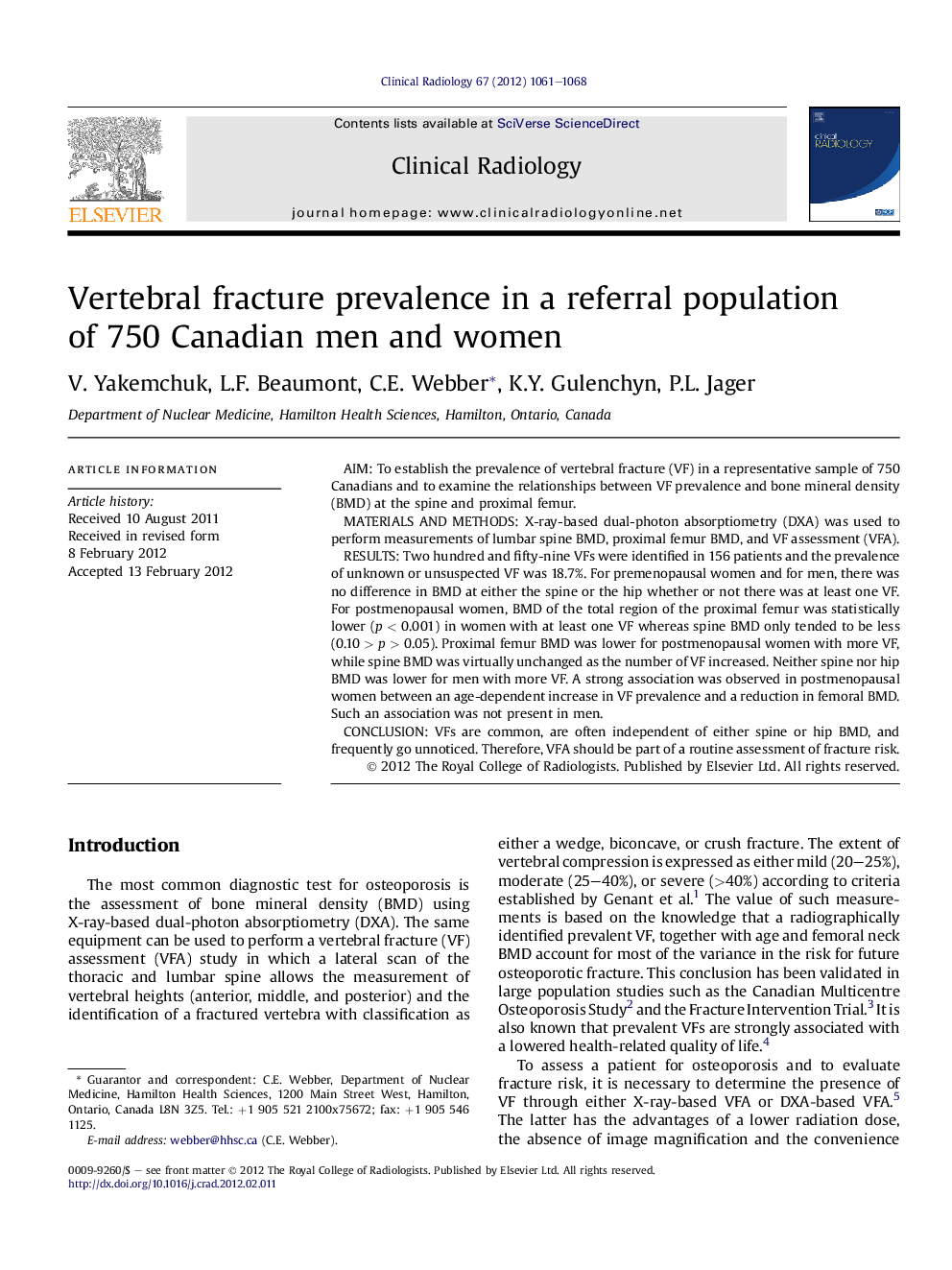| Article ID | Journal | Published Year | Pages | File Type |
|---|---|---|---|---|
| 3982839 | Clinical Radiology | 2012 | 8 Pages |
AimTo establish the prevalence of vertebral fracture (VF) in a representative sample of 750 Canadians and to examine the relationships between VF prevalence and bone mineral density (BMD) at the spine and proximal femur.Materials and methodsX-ray-based dual-photon absorptiometry (DXA) was used to perform measurements of lumbar spine BMD, proximal femur BMD, and VF assessment (VFA).ResultsTwo hundred and fifty-nine VFs were identified in 156 patients and the prevalence of unknown or unsuspected VF was 18.7%. For premenopausal women and for men, there was no difference in BMD at either the spine or the hip whether or not there was at least one VF. For postmenopausal women, BMD of the total region of the proximal femur was statistically lower (p < 0.001) in women with at least one VF whereas spine BMD only tended to be less (0.10 > p > 0.05). Proximal femur BMD was lower for postmenopausal women with more VF, while spine BMD was virtually unchanged as the number of VF increased. Neither spine nor hip BMD was lower for men with more VF. A strong association was observed in postmenopausal women between an age-dependent increase in VF prevalence and a reduction in femoral BMD. Such an association was not present in men.ConclusionVFs are common, are often independent of either spine or hip BMD, and frequently go unnoticed. Therefore, VFA should be part of a routine assessment of fracture risk.
